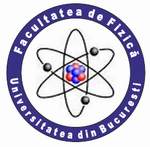| |
 |
UNIVERSITY OF BUCHAREST
FACULTY OF PHYSICS Guest
2025-10-05 22:30 |
 |
|
|
|
Conference: Bucharest University Faculty of Physics 2025 Meeting
Section: Nuclear and Elementary Particles Physics
Title:
Current Status and Future Perspectives of Radionuclides in Nuclear Medicine
Authors:
Andrei NECSOIU(1,2), Diana COCIOABA(1), Simona BARUTA(1), Liviu CRACIUN(1), Dana NICULAE(1), Alexandru JIPA(2)
*
Affiliation:
1) Horia Hulubei National Institute for Physics and Nuclear Engineering, Radiopharmaceutical Research Centre, Magurele, Romania
2) University of Bucharest, Doctoral School of Physics, Faculty of Physics, Bucharest, Romania
E-mail
andrei.necsoiu@nipne.ro
Keywords:
radioisotopes, nuclear medicine, cyclotron, theranostic
Abstract:
The application of radionuclides in nuclear medicine represents a major intersection between fundamental nuclear physics and modern medical diagnostics and therapy. Currently, radionuclides such as Technetium-99m, Iodine-131, Fluorine-18, Gallium-68, Lutetium-177, Ytrium-90 are widely employed due to their well-characterized nuclear properties, including decay modes, half-lives, and emission energies, which are essential for imaging and therapeutic precision.
The production of these radionuclides relies on nuclear reactions induced in reactors or cyclotrons, where target selection, reaction cross-sections, and yield optimization are critical parameters.
Recent advancements in nuclear physics have enabled the exploration of novel isotopes, such as alpha-emitters (e.g., Actinium-225, Astatine-211) and theranostic pairs (e.g., Copper-64/67, Terbium isotopes: Tb-149, Tb-161), which offer higher linear energy transfer and improved biological effectiveness. These developments pose new challenges in terms of production routes, radiochemical separation, and dosimetric modelling.
From a translational perspective, research is focusing on the development of targeted radiopharmaceuticals with higher specificity, improved tumour-to-background ratios, and reduced off-target toxicity.
Future directions involve not only expanding the radioisotopes portfolio but also establishing robust production and regulatory frameworks. International collaborations and public-private partnerships will be essential in addressing supply chain challenges and promoting clinical translation. Ultimately, the evolution of radionuclide science and biomolecules with high specificity hold the potential to revolutionize precision medicine by offering more effective and individualized diagnostic and therapeutic options.
|
|
|
|